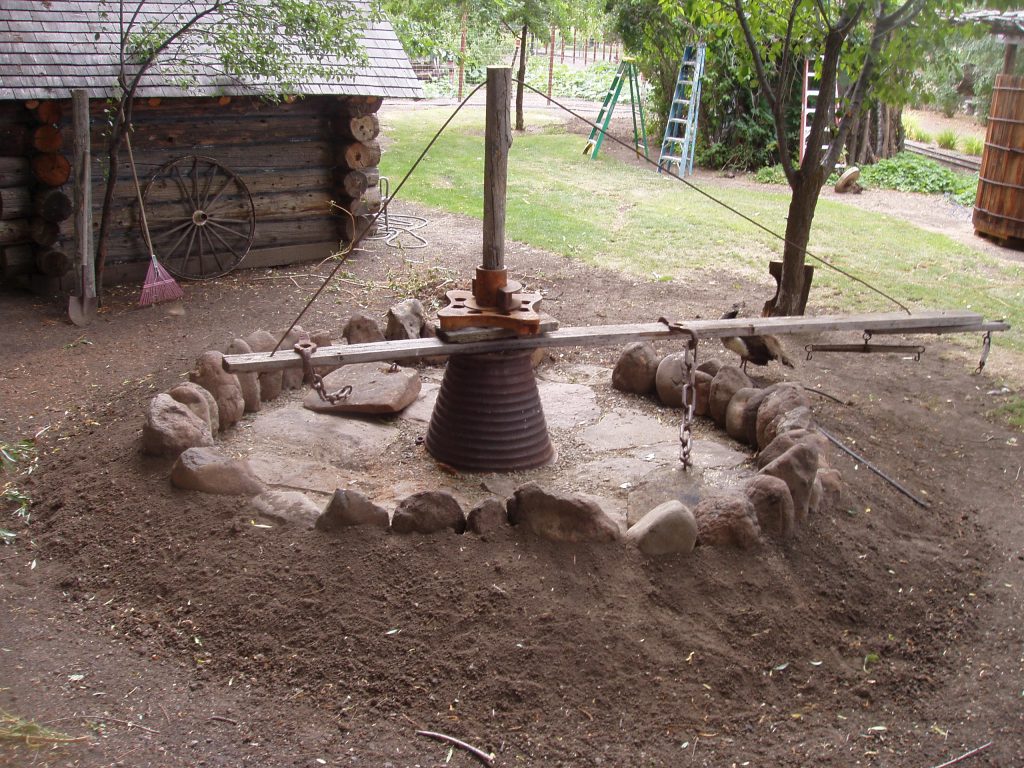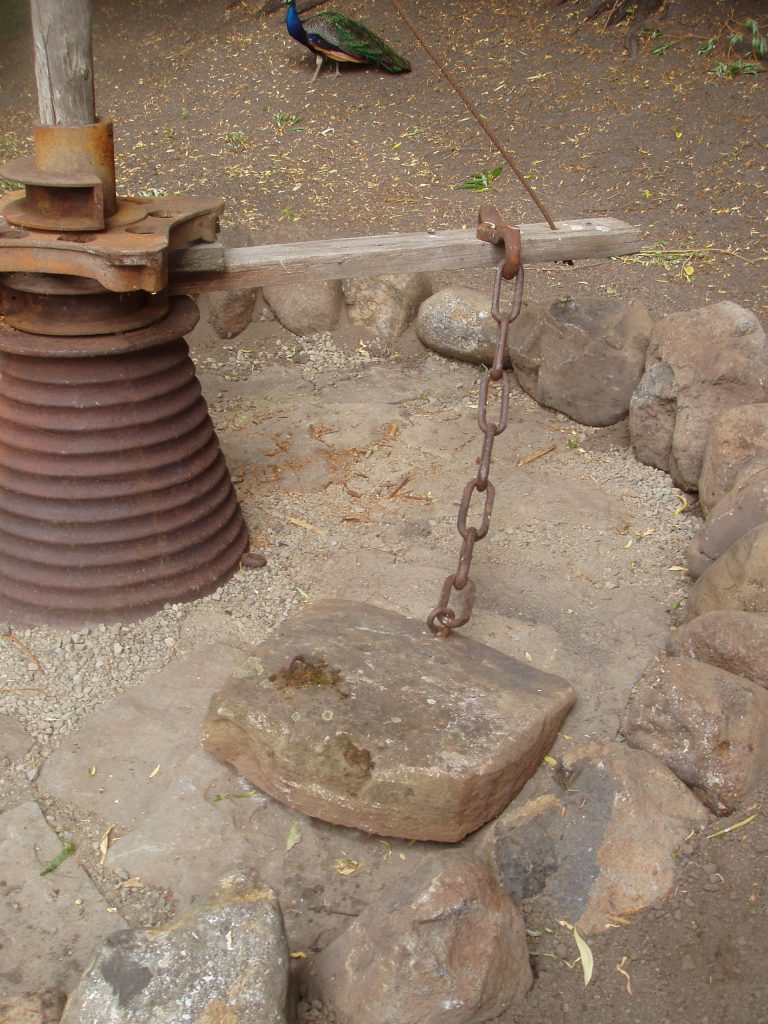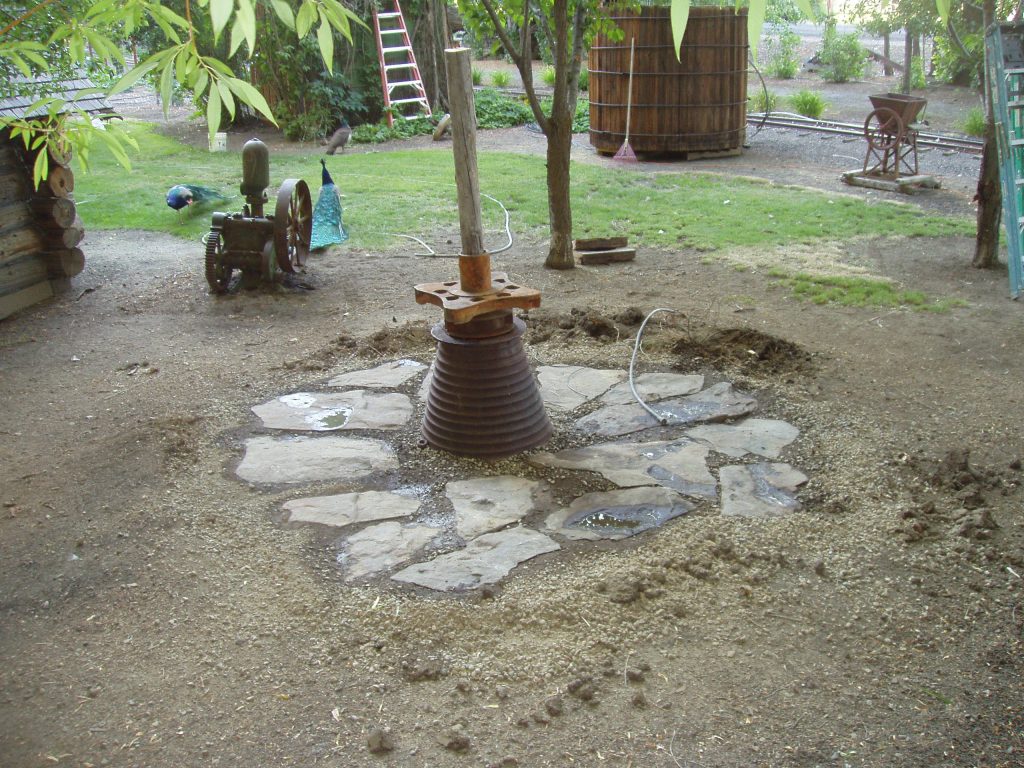Our Arrastra is located near the Stamp Mill in the lower field. Arrastras were introduced by the Spanish, to what is now the western United States, during the 1500s. A horse would drag two or more flat-bottomed rocks in a circular pit paved with flat stones. The flat stones were connected to a center post by a long arm. Ore was dumped in the Arrastra, and a horse or mule would drag the large stones in a circle, crushing the ore. Small or remote mining operations used Arrastras because they could be built from local materials and were cheap to build. The Spanish word “Arrastra” means “to drag along the ground”.







